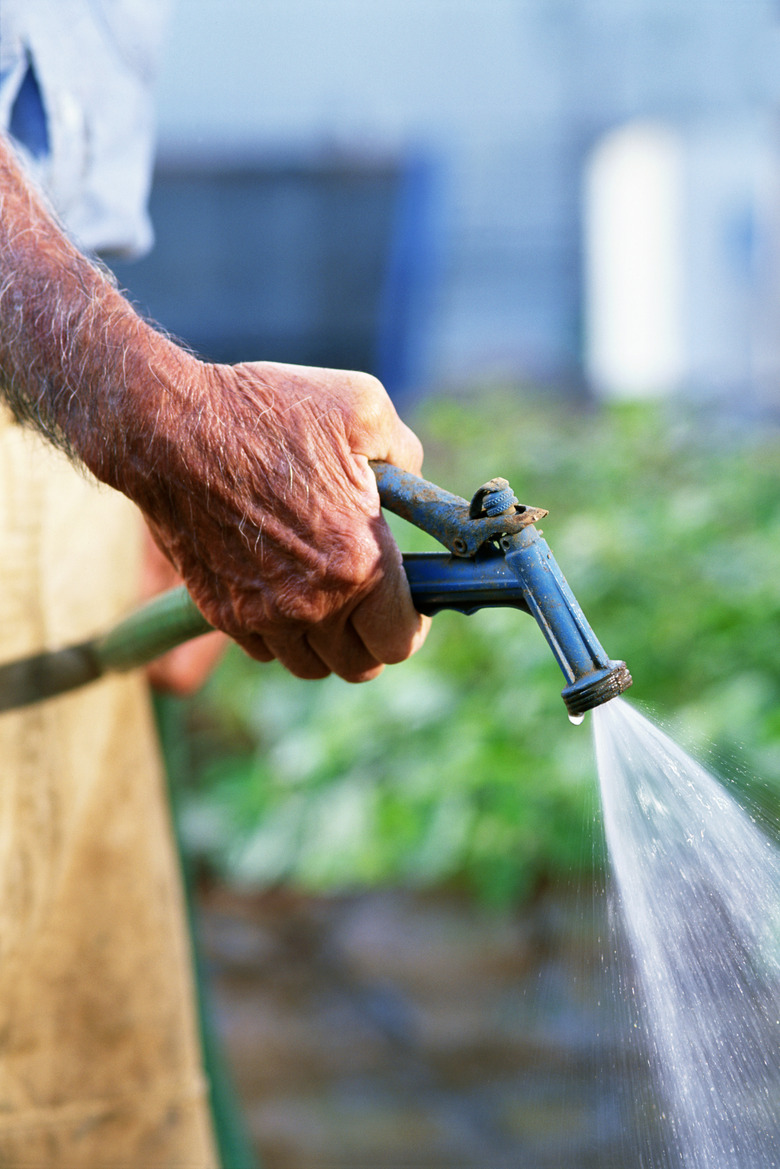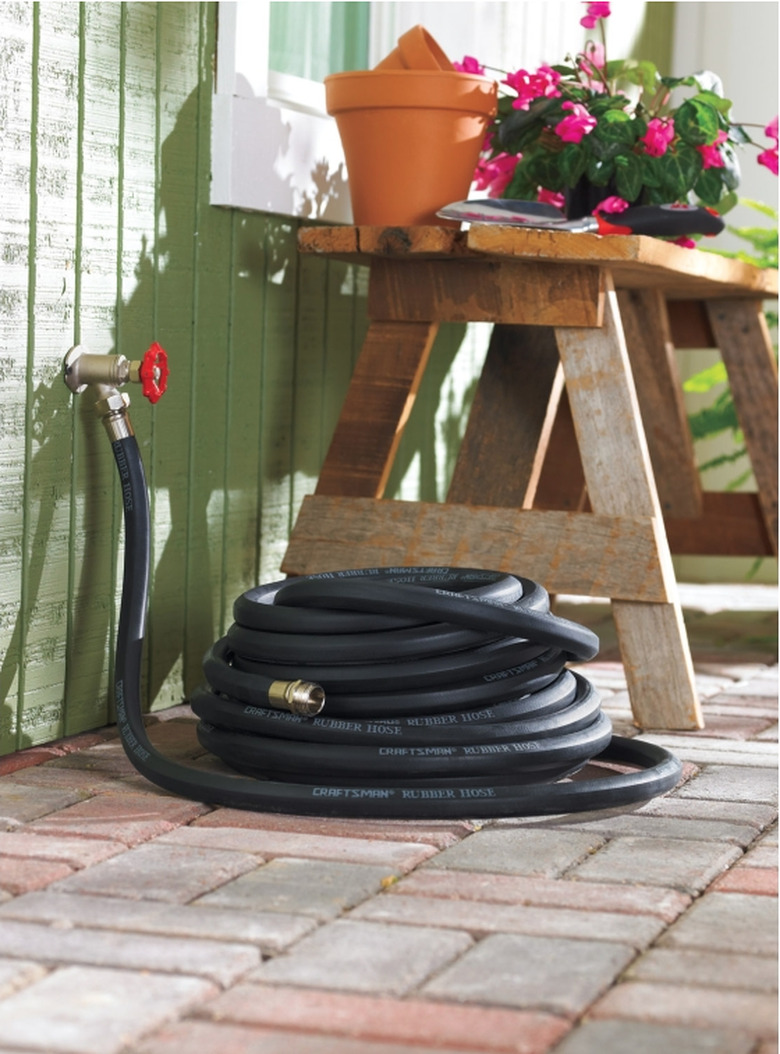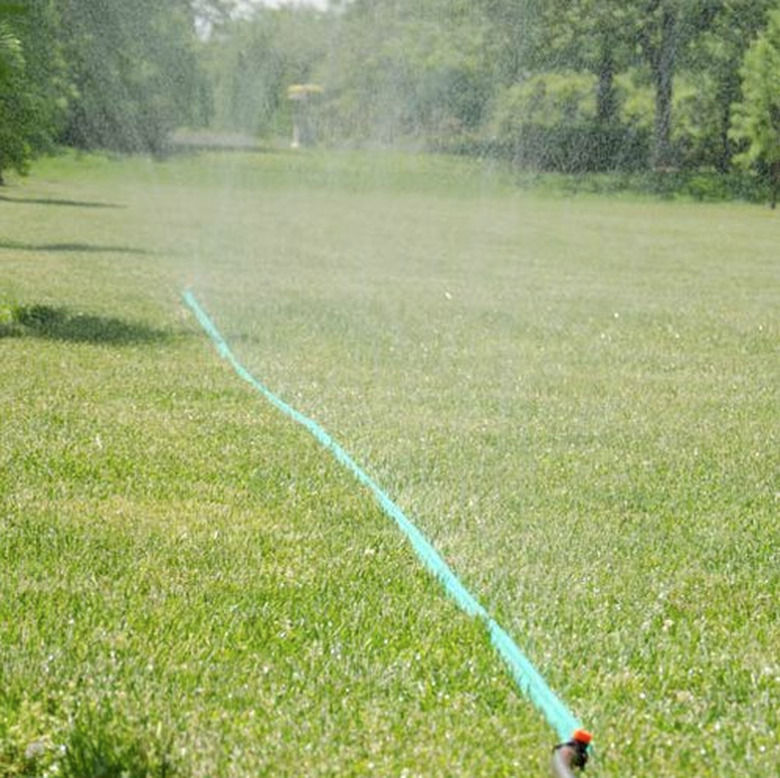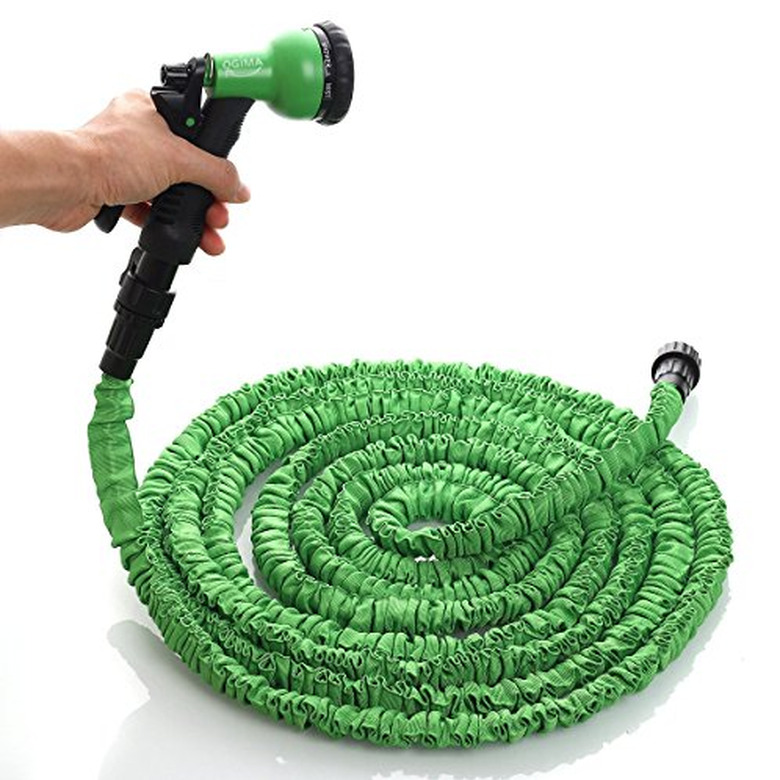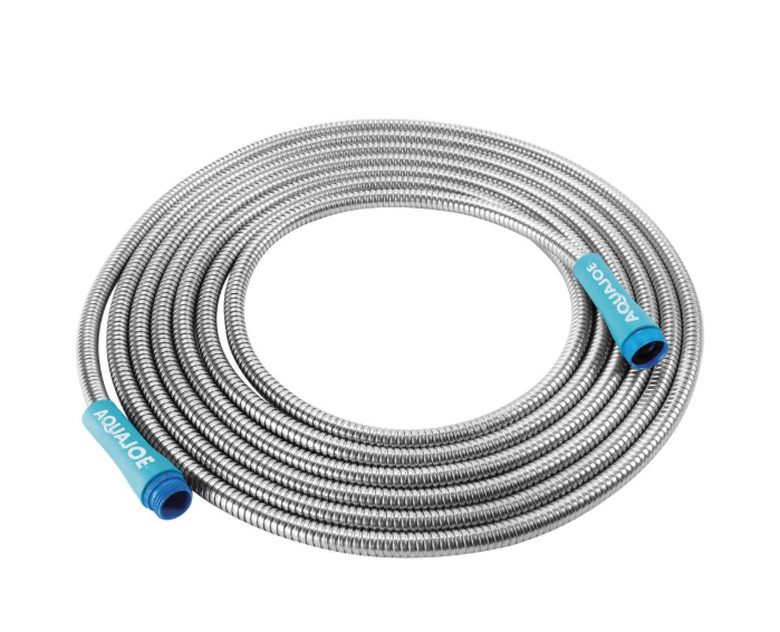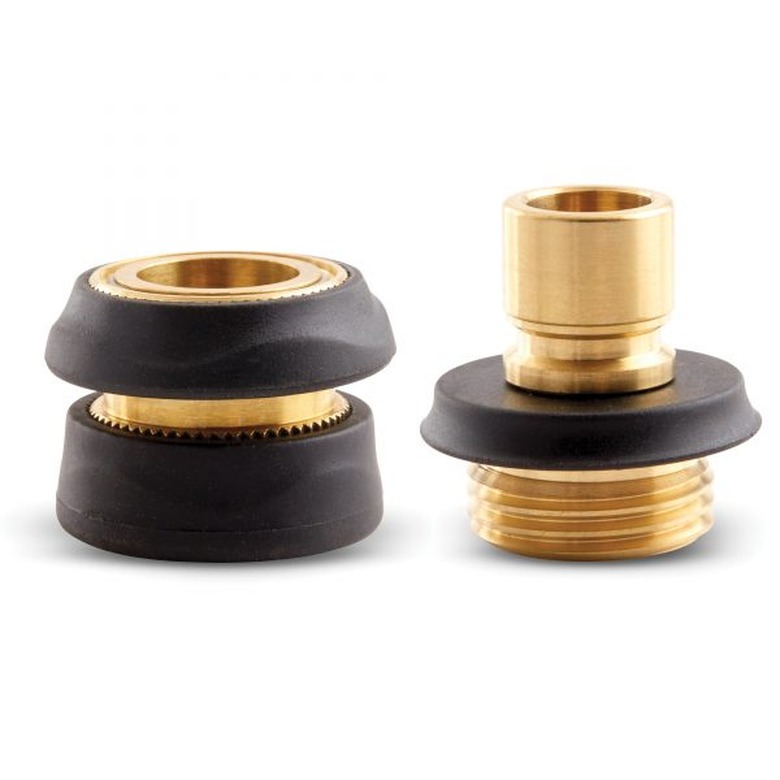Best Garden Hoses: How To Determine The Right Hose For You
Whether you're watering the garden, pressure washing your deck, or dashing through the water sprinkler on a hot summer day, a garden hose is a handy tool. When shopping for one, you'll find many styles, price points, and materials from which to select. Read on for the things to consider. But no matter which hose is the best for your purposes, expect to pay between $20 and $30 for a quality product. Buy a hose costing half or a third of that price and you could well be purchasing another one before long, because cheap hoses don't last.
Types of Hoses
Think about what you're going to use your hose for. Keeping the lawn looking lush? Washing your car? Irrigating vegetables? Do you have space restrictions? These are the factors to keep in mind when choosing a hose.
Basic All-Purpose Hose
This round hose, which are manufactured from a number of different materials (see descriptions of materials below) works well for many tasks, from watering plants and hosing off car mats to spraying out a trashcan. You can attach a nozzle or a sprinkler. A length of 25 feet is good for small gardens, but if you have a larger yard, get a hose (or several) 50 feet long. Hoses 75 and 100 feet long may be too heavy to handle easily, especially once water is running through them, so it's better to get several shorter hoses and couple them together as needed to save yourself from having to haul a longer, heavier hose all the time. For the same reason, avoid hoses with diameters larger than standard.
You leave this hose on the ground—preferably below a layer of mulch—rather than pointing the tip at things. Water seeps through its porous walls to irrigate the surrounding soil. Just snake it around the stems of the plants so the water goes straight to the roots. This type of hose prevents evaporation and can be more efficient by letting you aim the water directly where it needs to go. It's perfect for vegetable gardens as well as ornamental gardens.
You have a choice of diameters and lengths, from 1/4 inch (usually part of a drip irrigation system, these can be cut to length) to 5/8 inch or more. Soaker hoses work best on level ground and in shorter lengths (1/4-inch soaker hose works effectively for roughly 100 feet, for example). Large-diameter soaker hose requires good water pressure; otherwise, water won't seep out along the entire length. Larger diameters aren't terribly flexible and may be challenging to manage. Leave them in the sun to soften, then place them in the garden, holding them in place with garden stakes.
This type of hose has pinholes on one side that allow water to shoot up in a fine shower, and a flat base on the other. A sprinkler hose is best for watering expanses of grass seed, new lawn, and young plants, but you can also arrange it with holes facing down to act much like a soaker hose; however, because more water flows out, it will drench the ground more quickly than a soaker hose.
When empty, this kind of hose folds flat, but when water courses through it, it becomes round. Lightweight and self-draining, this hose takes less storage space but it really requires a hose reel to do so. Unfortunately, you have to unroll the entire hose before use; otherwise, water won't flow. Because flat hose is typically made of vinyl, it punctures and kinks easily. It doesn't perform well when yanked around corners; in fact, the hose should ideally be laid in a straight line. Flat hoses are best reserved for households where space is at a premium and the hose will be used infrequently.
Another space-saving solution, this scrunchie-like hose expands to three times its length when water runs through it. When empty of water, it shrinks back to its original size—dragging any accessories, such as sprinklers, with it. So make sure you don't have any fragile plants in the way!
Although they shrink and expand properly at first, over time they no longer contract properly and are then difficult to coil or store. When left in the sun or used with high water pressure, they're prone to rupturing because the inner tube is thin, very flexible, and not reinforced. But this is what makes them so lightweight—roughly 1 pound. If you're willing to store them out of the sun after each use and treat them gently, they're perfect for hand watering.
When not in use, this type of hose coils into a tight spiral. Most commonly sold in 25- and 50-foot lengths, they range on the smaller side in terms of diameter, so they have low water pressure. Storage is tricky because they can't be wound on hose reels, and they tangle easily when tossed in bins. Coiled hoses are best reserved for hand watering on small patios and balconies.
Material Choices
The most common hose materials are vinyl, polyurethane, stainless steel, and rubber. The material is your first indicator of quality in a hose.
- Vinyl hoses cost the least and are lightweight. Even when reinforced with a radial cord, they nonetheless kink easily, are prone to cracks and splits, and won't hold up for long.
- Rubber hoses cost more and weigh more, but they're more flexible and withstand cuts and abrasions. And they won't break down when left in the sun, so they have longer lifespans.
- Hoses constructed of both vinyl and rubber combine the flexibility and durability of rubber with the light weight of vinyl. Manufacturers may reinforce them with a number of layers or an outer mesh that protects against punctures.
- Stainless steel hoses are the new kids in the yard. Very durable, surprisingly lightweight, and designed to stay cool to the touch despite scorching summer temperatures, these hoses can cost considerably more than other materials. Beware of knock-offs, which may not be of good quality.
A good-quality garden hose is tough, yet soft and flexible. A nylon or rayon reinforcing fabric sandwiched between the inner and outer layers will help a hose resist kinking, splitting, and high water pressure levels. Household hoses range from one to six plies—generally, the more plies, the better the quality and the longer the life of the hose.
If a PSI number is given on the packaging, it tells you the water pressure the hose can withstand before rupturing. If you plan to use a nozzle or a sprinkler, get a hose with a burst pressure above 350 psi. If you're going to use the hose for pressure washing, check the owner's manual—you may need an even higher psi.
Warning
The plasticizers used to make hoses flexible contain BPAs, lead, and other chemicals that aren't safe for ingestion, so don't drink from a hose unless it's designated as boat, marine, or recreational. Those hoses are typically polyurethane, or they have linings that keep drinking water safe for human and pet consumption.
Diameter and Length
Hoses are available with inner diameters between 1/2 and 1 inch, but 5/8 inch is standard. A 1/2-inch diameter hose may not have enough pressure for sprinklers and washing cars. A hose with a diameter larger than 5/8 inch, on the other hand, can compensate for the inconsistent water pressure caused by running a hose uphill.
You can buy hoses in lengths of 25, 50, 75, and 100 feet, or more. Your hose should be a few feet longer than the distance from the spigot you need to cover. If your hose is too short, you'll tug on it, which can stretch and damage it; too long, and it's hard to manage. Note that water pressure diminishes as hose length increases, which may affect nozzles and sprinklers.
Fittings/Couplings
Used interchangeably, fittings and couplings are the pieces at the ends of the hose that attach to spigots, nozzles, and sprinklers. Choose sturdy fittings made of cast brass, and check to make sure the female end of the hose (the larger end that attaches to the water source) has a rubber washer in it. How to identify cast brass? It's thicker than sheet metal and is usually octagonal, to allow the fitting to be tightened with a wrench.
Avoid plastic couplings and lightweight, flimsy-looking fittings made of stamped metal—they're hard to screw onto the spigot, won't fit tightly, won't last, and will allow water to leak out wastefully. Plastic couplings crack easily and break down in the sun, and they can get crushed if you step on them.
Quality hoses have a plastic or rubber sleeve 4 to 6 inches long extending below the female coupling. This collar protects against the kinks and splits that commonly occur near the spigot.
Tip
To gauge hose quality, bend it tightly on itself and watch to see if it bounces back. If it doesn't, the quality is poor. Look for a different hose.
Quick-Fit Connectors
These gadgets save you time when switching out additional hoses, sprinklers, or nozzles. Instead of having to unscrew and rescrew, you simply install these components, then snap the accessories or other hoses on and off. Install by screwing the female quick-fit connector to the end of your hose, and the male connector to the accessory or second hose. You can buy sets, or individual male or female fittings.
Light-Duty or Heavy-Duty?
Lightweight/light duty hoses are usually made of vinyl, with or without reinforcing mesh or multiple plies. Although they have shorter lifespans, they're priced on the lower end. If you're on a budget, have a small garden that requires a hose only 50 feet or shorter, won't water often, and won't use a nozzle or sprinkler, a lightweight hose is probably adequate. On the other hand, if you're likely to leave your hose in the sun, might drive over it by mistake, and will probably treat it roughly in various other ways, ramp up to heavy duty, or even industrial grade.
